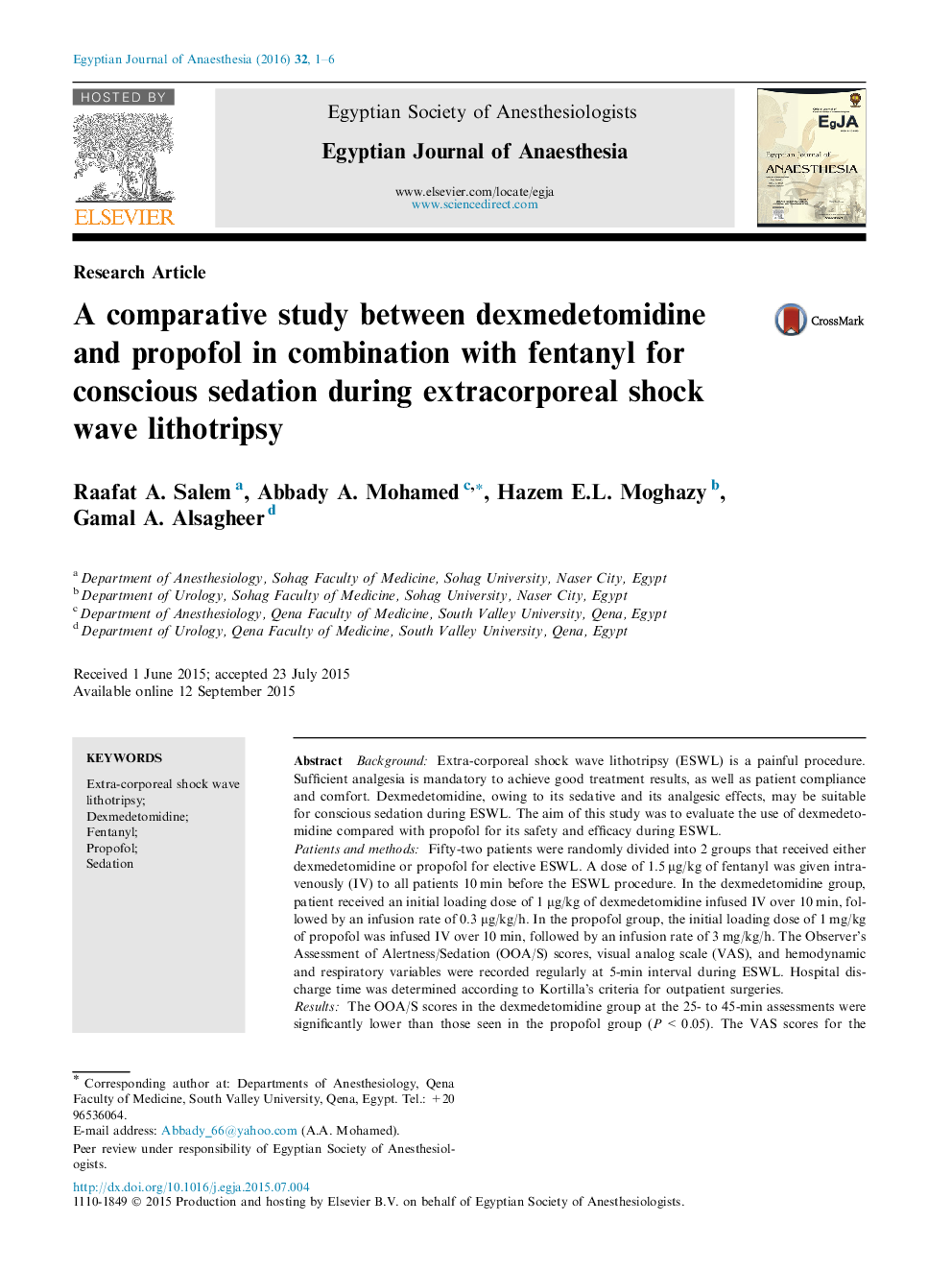| کد مقاله | کد نشریه | سال انتشار | مقاله انگلیسی | نسخه تمام متن |
|---|---|---|---|---|
| 2756204 | 1567410 | 2016 | 6 صفحه PDF | دانلود رایگان |
BackgroundExtra-corporeal shock wave lithotripsy (ESWL) is a painful procedure. Sufficient analgesia is mandatory to achieve good treatment results, as well as patient compliance and comfort. Dexmedetomidine, owing to its sedative and its analgesic effects, may be suitable for conscious sedation during ESWL. The aim of this study was to evaluate the use of dexmedetomidine compared with propofol for its safety and efficacy during ESWL.Patients and methodsFifty-two patients were randomly divided into 2 groups that received either dexmedetomidine or propofol for elective ESWL. A dose of 1.5 μg/kg of fentanyl was given intravenously (IV) to all patients 10 min before the ESWL procedure. In the dexmedetomidine group, patient received an initial loading dose of 1 μg/kg of dexmedetomidine infused IV over 10 min, followed by an infusion rate of 0.3 μg/kg/h. In the propofol group, the initial loading dose of 1 mg/kg of propofol was infused IV over 10 min, followed by an infusion rate of 3 mg/kg/h. The Observer’s Assessment of Alertness/Sedation (OOA/S) scores, visual analog scale (VAS), and hemodynamic and respiratory variables were recorded regularly at 5-min interval during ESWL. Hospital discharge time was determined according to Kortilla’s criteria for outpatient surgeries.ResultsThe OOA/S scores in the dexmedetomidine group at the 25- to 45-min assessments were significantly lower than those seen in the propofol group (P < 0.05). The VAS scores for the dexmedetomidine group were significantly lower than those in the propofol group, but only at the 30- to 45-min assessments (P < 0.05). During sedation, the respiratory rate with dexmedetomidine was significantly slower (P < 0.05). Other clinical variables, adverse effects, and hospital discharge times were comparable in both groups (P > 0.05).ConclusionDexmedetomidine with fentanyl can be used safely and effectively, and it may be a valuable alternative to propofol with fentanyl for conscious sedation during ESWL.
Journal: Egyptian Journal of Anaesthesia - Volume 32, Issue 1, January 2016, Pages 1–6
